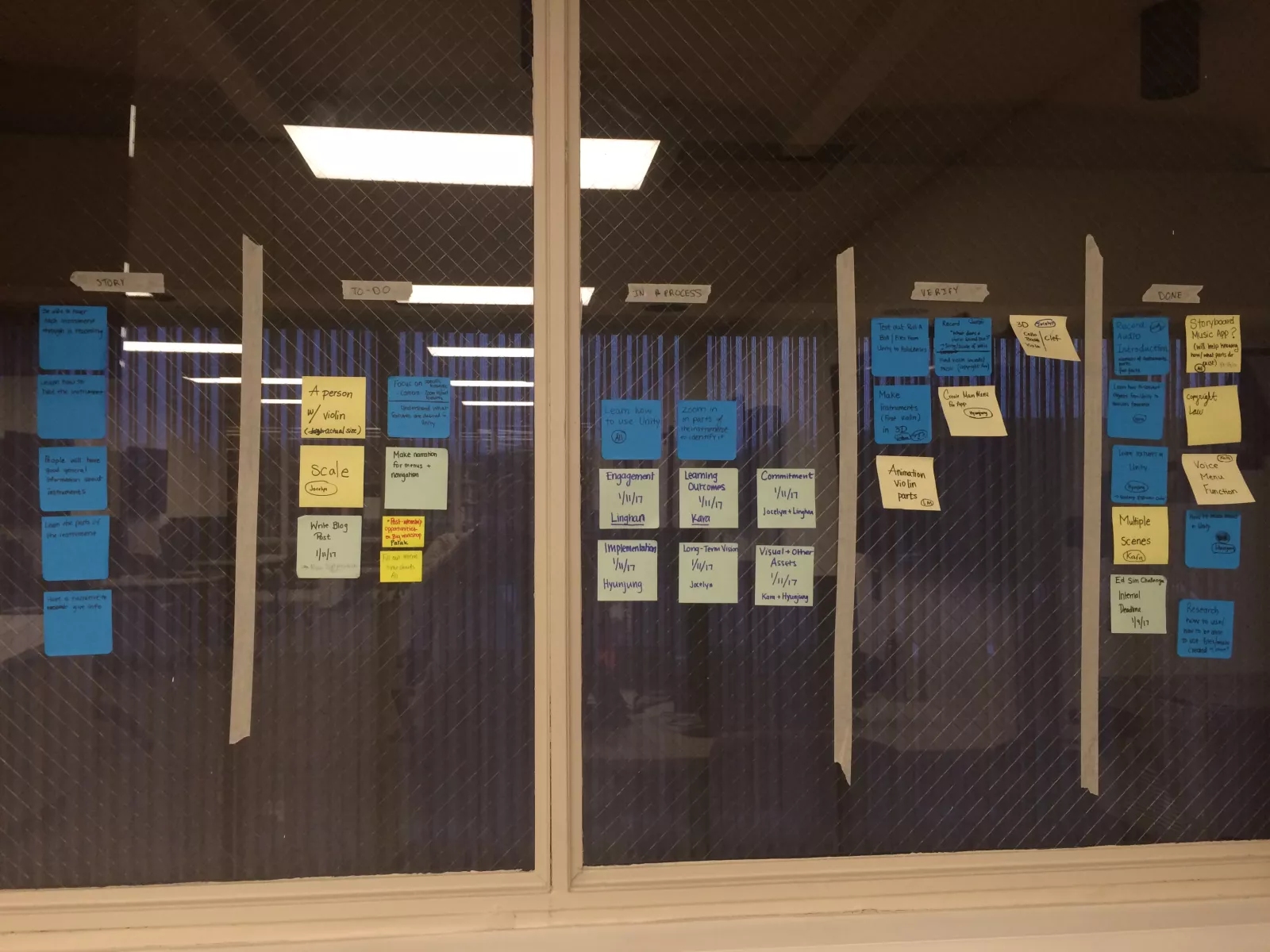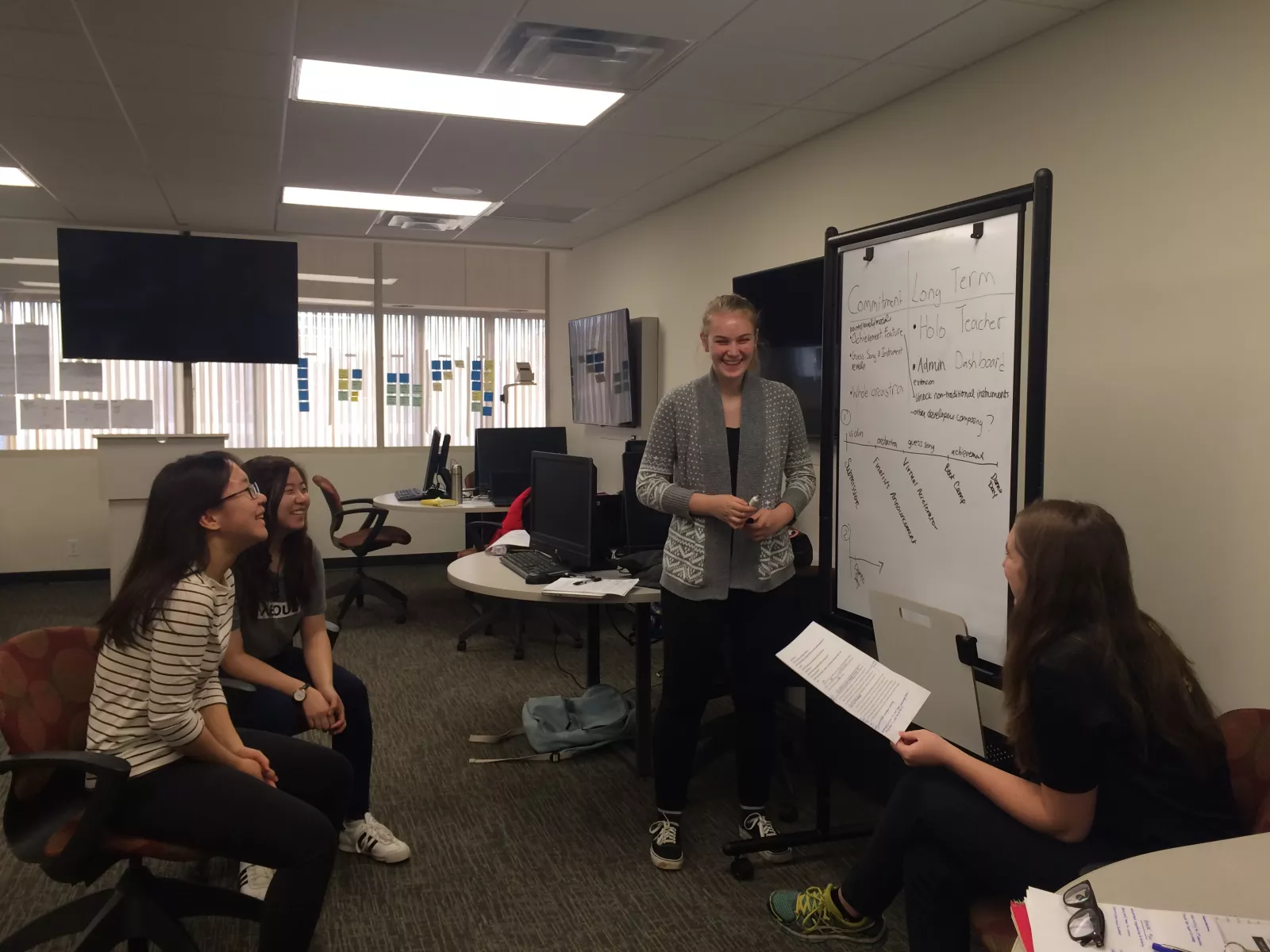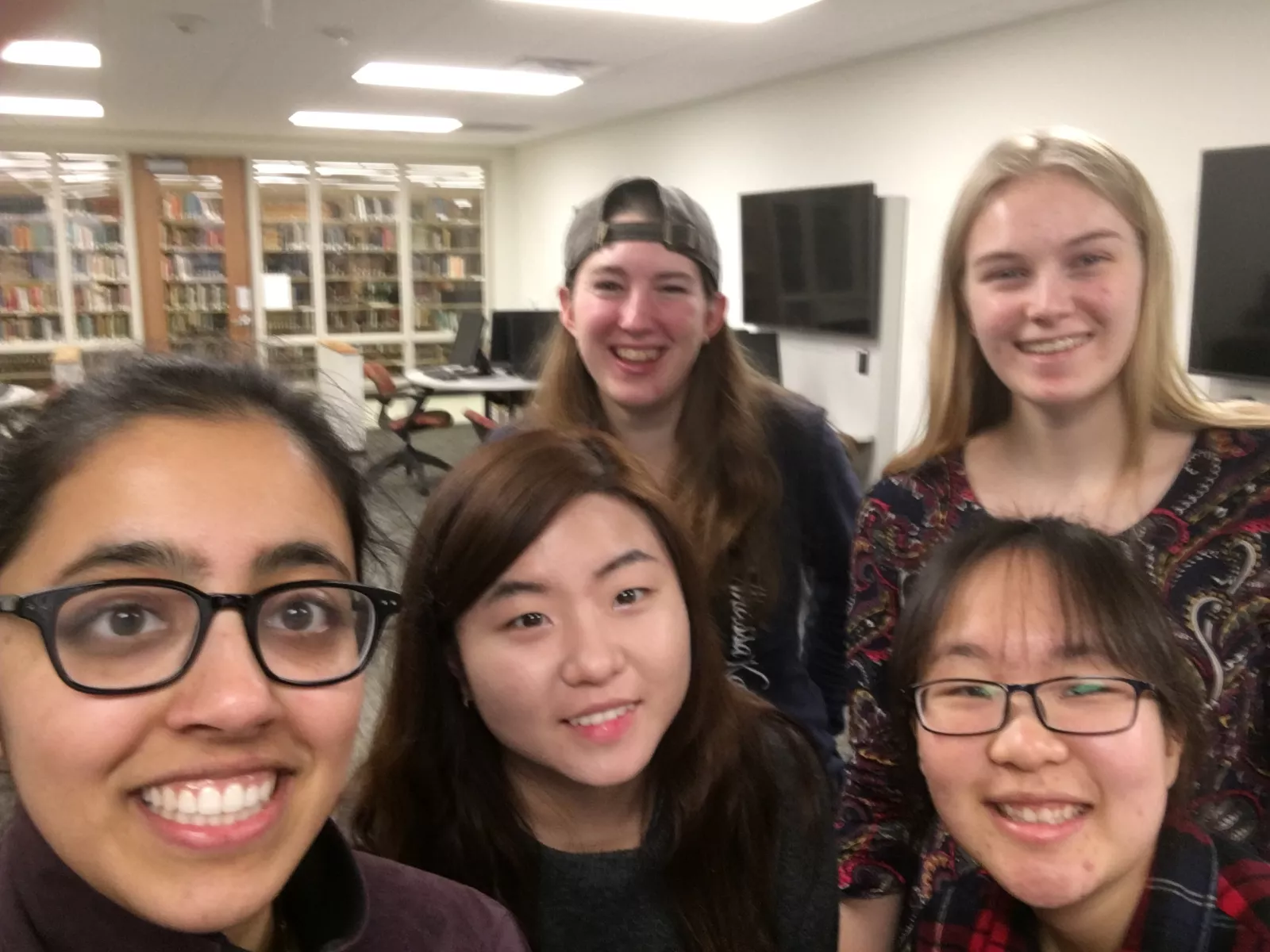Over winter break, Educational Technology Services (ETS) had the opportunity to hold a winter internship for students to learn more about the process of developing for the Microsoft HoloLens. ETS has been working with Pearson since September to explore educational uses for mixed/augmented reality, but winter break gave ETS the chance to see what four students could accomplish as a small, dedicated team.
Since the interns were working for a finite time period (15 days), ETS took a different approach to a traditional internship. Scrum development divides a large project into a series of “sprints,” each of which last for a few weeks. Each sprint brings the team closer to the completion of the larger project.
While the original intention was to understand what the process of developing for the HoloLens was like, the interns ended up using Scrum development for their submission to the U.S. Department of Education’s EdSiM Challenge.
The following is a blog post from one of our winter interns, Jocelyn Dunkley ’20, on the experience of working with the HoloLens.
Over winter break, I had the opportunity to work with the Microsoft Hololens, an augmented reality device released in 2015. The HoloLens differs from most virtual reality devices because it allows the user to see a virtual world coexist with the real world.
Right now, the HoloLens’ capabilities are limited. There are two motions you can use to manipulate your environment: an”air-tap” motion with your thumb and pointer finger and a “bloom” motion to open up the main menu. Though easy to understand, this limited functionality is also clear in the Microsoft Web Store: applications for the HoloLens are mostly point and shoot games and educational tutorials.
I used the programs Unity and Microsoft Visual Studio to code for the HoloLens. One aspect that was challenging was learning how to convert from Unity’s controls (mouse clicks and arrow keys) to the clicking and blooming gestures of the HoloLens.
Additionally, we had to use a special HoloLens Emulator to see what our game would look like on a HoloLens. We started by learning how to use Unity by working through basic tutorials, and then learned how to convert from Unity to Visual Studio to the HoloLens Emulator.
Our group based our internship around the US Department of Education’s EdSiM Challenge, a competition to submit educational-based virtual reality games or simulations. We decided to create a music education app on the HoloLens to teach users the basics about each instrument in a standard Western orchestra. The user would learn what the instrument looks like, what it sounds like, how to hold it, and facts about it.
We thought that the app would help schools and individuals alike by providing schools with information about the popularity of each instrument and helping people decide if they want to invest the time and money into learning an instrument.
Deciding to enter our app idea into the EdSiM Challenge was a great experience. For the challenge, we had to think about the long-term effects, the value of our game in education, and the cost and maintenance of the app. It really made us think about the purpose of our app and what people could actually gain from using it, which is something I never had to think about before.
I learned a great deal from this internship, and I really want to pass some of that information along. Students in the Tri-Co would definitely benefit from learning about the HoloLens. I hope to collaborate with ETS on workshops that introduce the HoloLens, let students play around with it, and show how to develop for the HoloLens. It is a fantastic piece of up-and-coming technology that will definitely have educational and commercial value in future years.
If you are interested in learning more about the HoloLens and the winter break internship, or would like to hold a workshop, please check out our other blog posts or reach out to Educational Technology Services.


